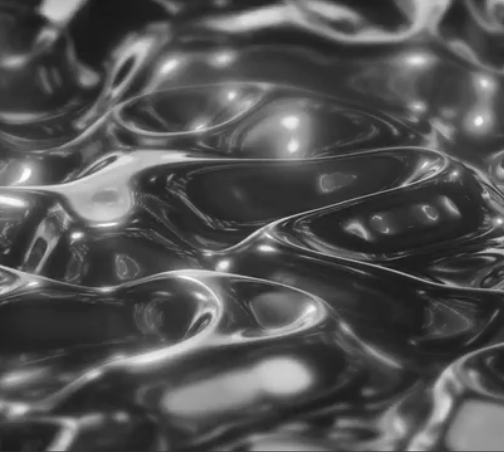Higher-order defects , two-dimensional.
Surface defects
There are 2 subtypes:
- Exterior surfaces
- Grain boundaries
Exterior Surfaces: the outer surface of any material can be considered a defect in itself because it is a more reactive region of the material: there are atomic bonds stumped/truncated because the surface atoms are not completely surrounded by neighboring atoms. The exterior surface is in direct contact with the environment which can for example be aggressive for various reasons, so it is more easily attacked by external agents.

Grain boundaries: in a crystalline solid in 3 dimensions, each component crystal is wrapped in a kind of envelope (a "skin") called a grain boundary. Essentially, grain boundaries are those boundary regions that separate adjacent single-crystal portions (grains) of a polycrystalline material.
If you cut a polycrystalline solid, what you see under an optical microscope is similar to the image shown below.

The regions delimited by the black contours are the individual crystals that make up the material; the black contours delimiting the crystals are the grain boundaries.

Grain boundaries can be represented as a surface in space, since the three-dimensional material is as if it wraps around the crystalline and within individual crystalline grains atoms have a defined orientation, while in the areas corresponding to grain boundaries atomic arrangement is non-existent. Grain boundaries are zones of poor atomic arrangement, the atoms are randomly arranged, and they are a highly energetic and reactive zone. Grain boundaries can be particularly susceptible to intergranular corrosion, i.e., between crystalline grains.
Typically, grain boundaries are a few atomic diameters thick: they are not zero-thickness zones (they are not sharp interfaces) but they are not thick either.
There can be an interaction between dislocations and grain boundaries, because dislocations can move around inside the material and when they reach the grain boundaries they tend to accumulate and if there is sufficient energy supplied externally they can "jump" from one grain to another. The difficulty of this 'jump' is the misalignment of these grains, the dislocation has to change its orientation and align itself congruently with the atomic planes of the adjacent crystal, there is a kind of energy barrier that the dislocation has to overcome.
In addition to dislocations, impurities, i.e. atomic defects of various kinds, can also accumulate at grain boundaries. Grain boundaries can of course be found in both ceramic and metallic materials. In order to highlight grain boundaries, the material must be chemically attacked, e.g. with an acid that dissolves the grain boundaries. In both micrographs we have grains, crystals more or less all of the same size, without preferential orientations, we have so-called equiaxial crystals, i.e. more or less rounded.
In polycrystalline materials, there are no preferential crystal orientations because the crystals are round and therefore the materials are isotropic. Therefore, their mechanical, functional, electrical and thermal properties do not depend on the direction along which they are measured.
![]() Polycrystalline materials: surface defects
Polycrystalline materials: surface defects 



